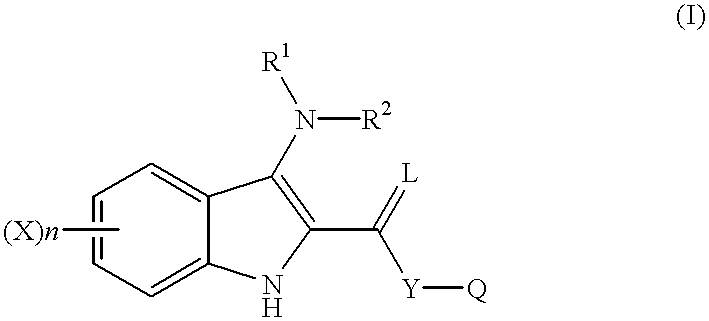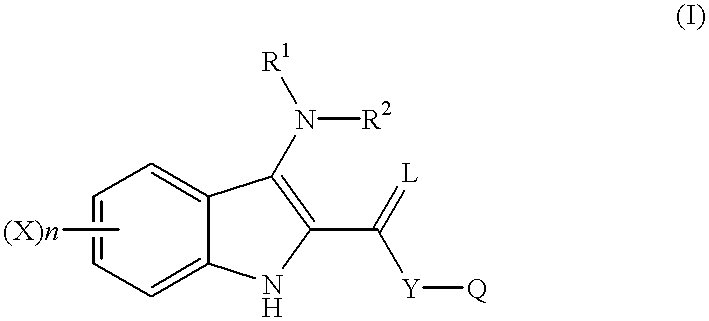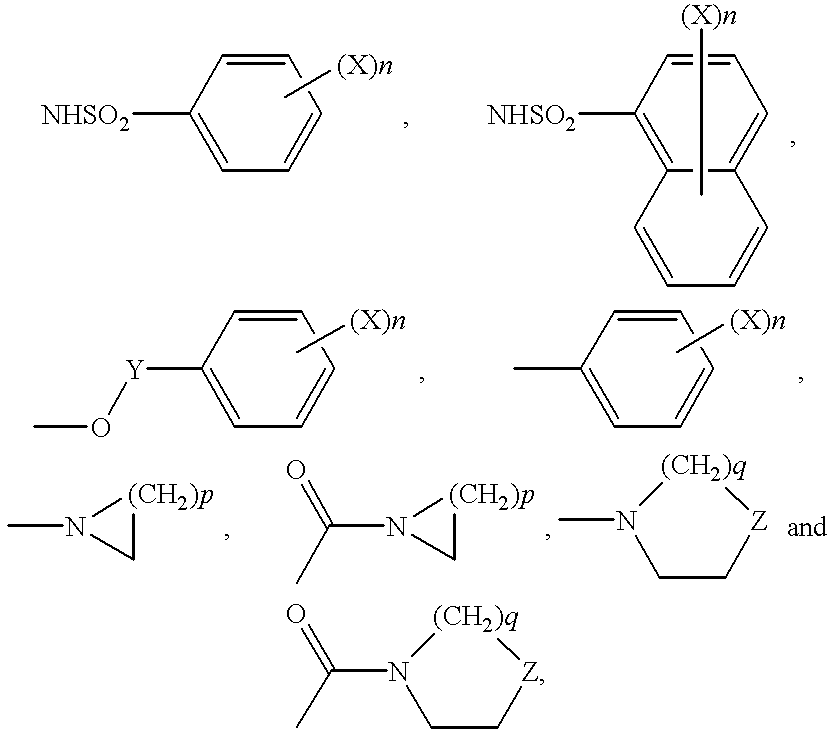Indole compounds as COX-2 inhibitors
a technology of indole compounds and cox-2 inhibitors, which is applied in the direction of heterocyclic compound active ingredients, biocide, drug compositions, etc., can solve the problems of limited therapeutic use of conventional nsaids, severe side effects, etc., and achieve the effect of inhibiting the contraction of prostaniods and preventing the synthesis of contractile prostanoids
- Summary
- Abstract
- Description
- Claims
- Application Information
AI Technical Summary
Benefits of technology
Problems solved by technology
Method used
Image
Examples
examples
The invention is illustrated in the following non-limiting examples in which, unless stated otherwise: all operations were carried out at room or ambient temperature, that is, in the range of 18-25.degree. C.; evaporation of solvent was carried out using a rotary evaporator under reduced pressure with a bath of up to 60.degree. C.; reactions were monitored by thin layer chromatography (tlc) and reaction times are given for illustration only; melting points (m.p.) given are uncorrected (polymorphism may result in different melting points); structure and purity of all isolated compounds were assured by at least one of the following techniques: tlc (Merck silica gel 60 F-254 precoated plates), mass spectrometry, nuclear magnetic resonance (NMR) or microanalysis. Yields are given for illustrative purposes only. Flash column chromatography was carried out using Merck silica gel 60 (230-400 mesh ASTM). Optical rotations were measured using a JASCO DIP-370 Digital Polarimeter (Japan Spectr...
example 393
3-Acetylamino-2-benzoyl-7-chloroindole
Step 1. 7-Chloro-3-nitroindole-2-carboxylic acid
Seventy percent nitric acid (3.4 ml) was added to dropwise to acetic anhydride (35 ml) with stirring at room temperature. The mixture was then cooled in an ice bath and 7-chloroindole-2-carboxylic acid (EP 0 622 356 A1, 1.71 g, 8.74 mmol) was added carefully. After stirring for an additional 1.5 h, the suspension was filtered and the filter cake washed with hexane and air-dried. The yield of 7-chloro-3-nitroindole-2-carboxylic acid , yellow solids, was 283 mg (14%). .sup.1 H-NMR (DMSO-d.sub.6) .delta.: 13.66 (1H, br s), 8.04 (1H, dd, J=1.1, 8.1 Hz), 7.53 (1H, dd, J=1.1, 7.7 Hz), 7.42 (1H, dd, J=7.7, 8.1 Hz).
Step 2. 7-Chloro-2-[(N-methoxy-N-methylamino)carbonyl]-3-nitroindole
A solution of 7-chloro-3-nitroindole-2-carboxylic acid (step 1, 400 mg, 1.7 mmol) in thionyl chloride (2 ml) was heated at 70.degree. C. for 3 h, the mixture cooled and concentrated. The residue was dissolved in dichloromethane ...
PUM
| Property | Measurement | Unit |
|---|---|---|
| Chemically inert | aaaaa | aaaaa |
| Pharmaceutically acceptable | aaaaa | aaaaa |
Abstract
Description
Claims
Application Information
 Login to View More
Login to View More - R&D
- Intellectual Property
- Life Sciences
- Materials
- Tech Scout
- Unparalleled Data Quality
- Higher Quality Content
- 60% Fewer Hallucinations
Browse by: Latest US Patents, China's latest patents, Technical Efficacy Thesaurus, Application Domain, Technology Topic, Popular Technical Reports.
© 2025 PatSnap. All rights reserved.Legal|Privacy policy|Modern Slavery Act Transparency Statement|Sitemap|About US| Contact US: help@patsnap.com



